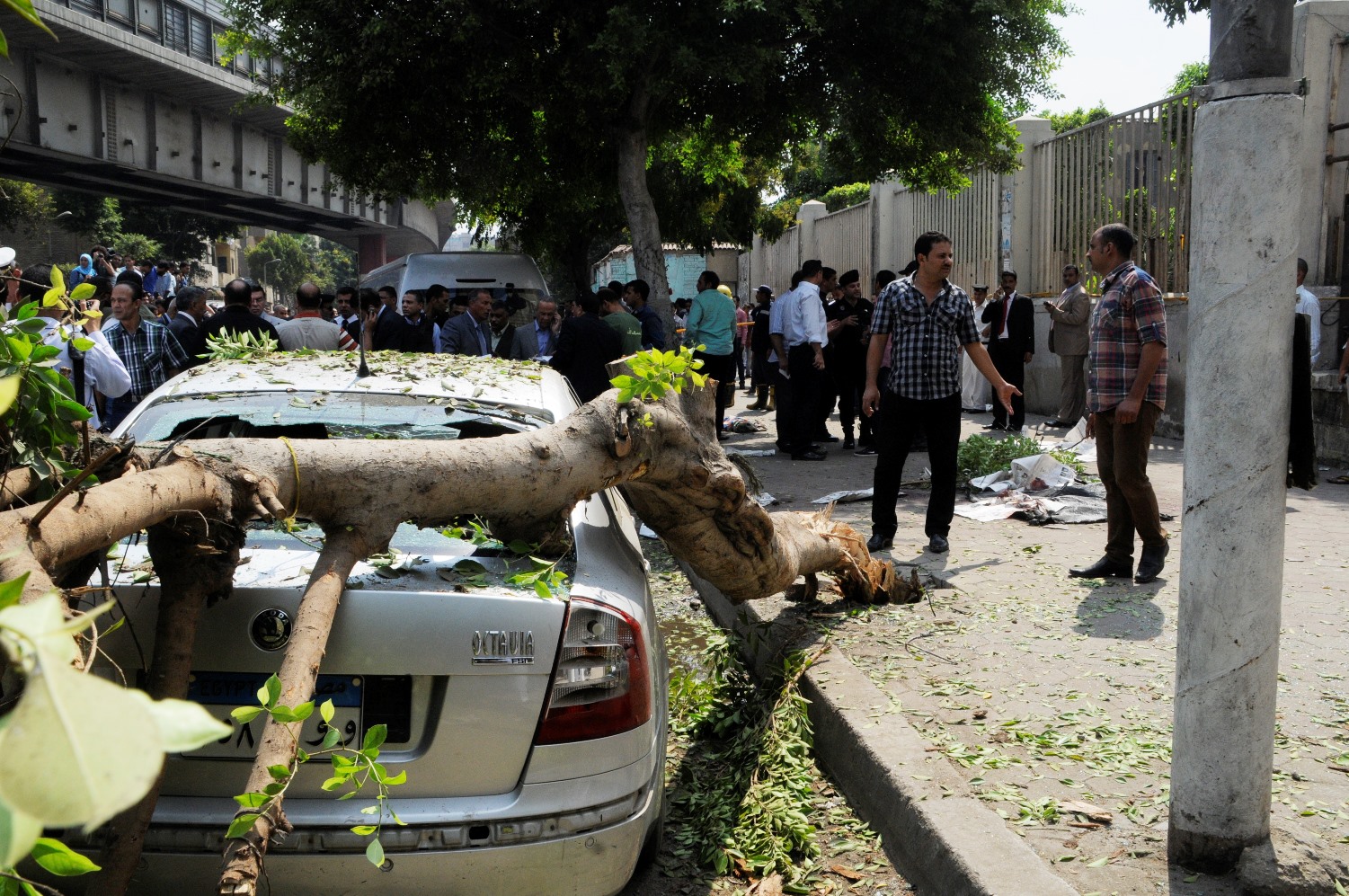CAIRO: Driver education is limited to family drivers or well-meaning uncles or near-hysterical parents. Few of those who run off to get their driver’s licenses have any idea of what the myriad of road signs mean. I have an aunt who gets her license renewed regularly despite the fact that the last time she gripped a steering wheel was in 1974.How many times have we seen a car drive by with what looks like a 14 year old at the wheel?
Egypt doesn’t have a great track record when it comes to road safety; although it’s improving. We were recently toppled from the top spot for car fatalities around the world; currently, we are at the number three spot.
Traffic safety rules on Egyptian roads tend to be a little more imaginative than on others. For example, an Illinois, USA handbook on safe driving lists the following habits as indicative of an aggressive driver.
Speeding Running red lights and stop signsTailgatingPassing on the shoulder of the roadCutting off another vehicleSlamming on brakes in front of a tailgaterImproper hand or facial gestures at other driversYellingRepeatedly honking the hornRepeatedly flashing of headlights
To most Egyptian drivers, there’s very little there that would cause any undue attention. In fact, a couple of them, like the repeated honking and headlight-flashing are practically requirements. They seem to take this kind of thing very seriously in the U.S. The manual solemnly asks that you do not engage ‘aggressive’ drivers. It suggests that you get out of the way, avoid making eye contact, keep your doors and windows locked, do not underestimate the other driver’s potential for aggression, and generally just stay the heck out of their way.
The last is good advice around here, although it could use a little alteration for local climate: never underestimate any driver’s aptitude for ruining your body work. Make sure you keep your distance, as whatever happens, it’s never going to be the other drivers fault. On the off chance that he turns out to be nice you, you can bet your expensive, imported headlights that he’s not insured.
There have recently been attempts to highlight road safety issues, most notably in the recent second Road Safety and Traffic Management conference held Feb. 15-16 2006. The conference came up with a few notable recommendations.
Human life is the highest value in any society.The government was intent on furthering private-public participation for road safety in Egypt.The government can benefit from private sector experience in addressing road safety issues.Paying attention to all sources of pollution from vehicles and combat the phenomenon.Road safety, at driver level, can often be a matter of simple common sense. The following are a few tips to keep in mind.Before you get in your car, flash over these points in your mind.Be patient and courteous; Egyptians are always patient and courteous, it’s just a well-kept secret. Do not drive when angry, overtired, or upset.Allow extra time to get to your destination. Remember, chances are, the guy in front of you is late for the same meeting you’re going to. Driving him off the road is significantly more complicated than just leaving home 15 minutes earlier.When possible, change your schedule to avoid congestion. Alternatively, if you live in Cairo, you could move to say, Tanta. Since, however, this isn’t likely to be feasible, just bear in mind that it can get pretty crowded between 8 a.m. and 1 a.m. Allow extra time.Give other drivers the benefit of the doubt as all drivers make mistakes. That includes you.Avoid all conflict, even if you are right. Or even if you just think you’re right.Once you’re armed with the basics of common sense, pay attention to some specifics.Alert driving: driving needs concentration. You might think you’re a good driver and a safe one, but if you’re juggling a cell phone, yelling at another driver and listening to loud music or tying to make sure the kids really are fastened into their car seat, you’ve got too much going on.
Ideally, you shouldn’t be on the phone while driving, but if you have to, use a speaker. If you’re busy trying to dial, your eyes aren’t where they should be, on the road. Drivers trying to send a text message while negotiating curves are simply a menace to everyone else on the road. Don’t do it.
If its summertime and you’re driving up to the north coast, you need to pay attention to highway hypnosis. Lack of sleep or travel fatigue impact your ability to drive safely. When taking a long trip, avoid drowsiness by stopping frequently to drink coffee, exercise or nap. Exercise your eyes by reading road signs or shifting the focus of your eyes to different parts of the roadway. Make sure you are properly rested.
Alcohol: Do we need to tell you not to drink and drive? If you don’t care about other people’s kids, worry about your own.
Distance between you and the car in front: Unless there’s some reason why you want to get a really good look at the person in the back seat of the car in front of you, stay away. There’s a simple rule to figure out whether you’re too close or not. Just pick a fixed object on the road ahead such as a sign, tree or overpass. When the vehicle ahead of you passes the object, count one-thousand-one, one-thousand-two . You should not reach the object before you count to one-thousand-two. If you do, you are following too closely. Most rear end collisions are caused by the vehicle in back following too closely. Remember, if you smack into someone’s rear, it is your fault. People always replace headlights with the expensive imported ones when someone else is paying.
Speed: Use your common sense. Observe the speed limit. Getting your license back once police withdraw is a nightmare. However don’t drive too slowly either, you could cause an accident. If you want to drive slower, then stick to the slow lane on the right.
If you haven’t changed your tires in a while, then take that into consideration; smooth tires have lousy grip and it will take you longer to stop. The wider the tire, the faster the car will stop.
Weather conditions: Egypt is blessed with an extremely temperate climate, so weather conditions are usually great for driving. However, weather can create a driving hazard.
Fog: It is best not to drive in fog. However, if you must drive in fog, take the following precautions: Slow down. If you see headlights or taillights, slow down even more. A driver may be driving in the center of the roadway or have stopped or is barely moving. Drive with your headlights set on dim, or use fog-lights. Do not overuse your full-beam headlights. Stay within the limits of your vision. You may have to stop suddenly. If the fog is too dense, pull off the road and stop driving. Do not drive at 5-10 miles per hour. Use your turn signal long before you turn and brake early when you approach a stop to warn other drivers.
Rain: When rain begins to fall lightly, water, dust, oil and leaves can cause the roadway to become slippery. When this happens, increase your following distance. Take special care on curves and turns while braking. Your headlights must be on when operating your wipers. Low-lights are not acceptable. When rain begins to fall heavily, your tires may hydroplane. This means the tires are riding on a layer of water and not on the road-way. Avoid hydroplaning by slowing down. If you skid while hydroplaning, try to regain control of the vehicle. Otherwise, release the accelerator and ride out the skid.
Equipment Failure: Crashes often happen when equipment fails, especially when some of the vehicles have been on the road since before you got your license. Your best bet is to remain calm. Due to popular demand the government has set up a special emergency breakdown number for the road to Alexandria: 012 111 0000 (it also covers Cairo breakdown emergencies).
Equipment failures may include the following.
Blowouts: A thumping sound may be a warning of a blowout. If this happens, ease your foot off the gas pedal and keep a firm grasp on the steering wheel. Do not brake suddenly. Pull safely off the roadway and chec
k your tires.
Loss of a wheel: React as you would with a blowout. Ease off the gas pedal and pull off the roadway.
Steering failure: If you suddenly have no control of the steering wheel, ease your foot off the gas pedal. Turn on your emergency flashers and allow your vehicle to come to a slow stop. Brake very gently to prevent your vehicle from spinning.
Brake failure: If your brake pedal suddenly sinks to the floor, pump it to build pressure. If that does not work, use your emergency or parking brake. To slow down, shift your vehicle into a lower gear.
Headlight failure: If your headlights fail suddenly, try your emergency flashers, parking lights and/or turn signals. Pull off the road. If your lights begin to dim, drive to a service station or pull off the road and seek help.
Gas pedal sticks: If the gas pedal becomes stuck, hook your toe under the pedal to free it. If it does not become free, shift your vehicle into neutral and brake gently to slow down. If you have power steering or a locking steering wheel, do not turn off the ignition, you will lose either your power steering or your ability to steer.
Vision obstructed: If for any reason your vision becomes blocked, roll down the side window to see. Turn on your emergency flashers and then pull your vehicle off the road.
Night driving: This is difficult because things may appear differently than in the daylight. Glare from lights may interfere with vision. In Egypt, matters can be further complicated by a popular misconception that using one’s lights wears down the car battery. This is utterly false; once the engine is on, the lights run on the dynamo. Courtesy and common sense should be used when driving at night. Remember: Never over-use your headlights. Always keep them clean and aligned properly. Use them at dusk and dawn. Bright lights must be dimmed at 500 feet before meeting an oncoming vehicle or 300 ft before passing a vehicle. If street lights cause a lot of glare, dim your dashboard lights and use your sun visor. Avoid using any other light inside your vehicle. Roadway signs are more difficult to see at night. Use the edge and center lines of the roadway as guides.
Do not stop in the middle of the road. If you must stop, carry and use a red warning light.






